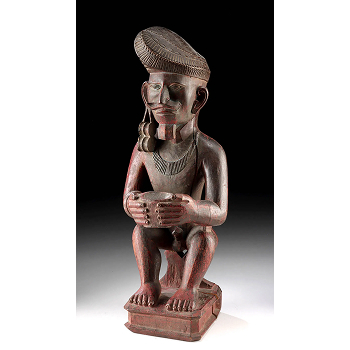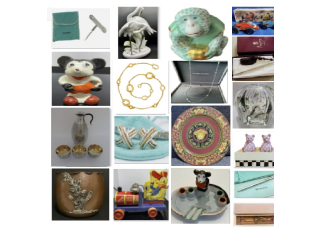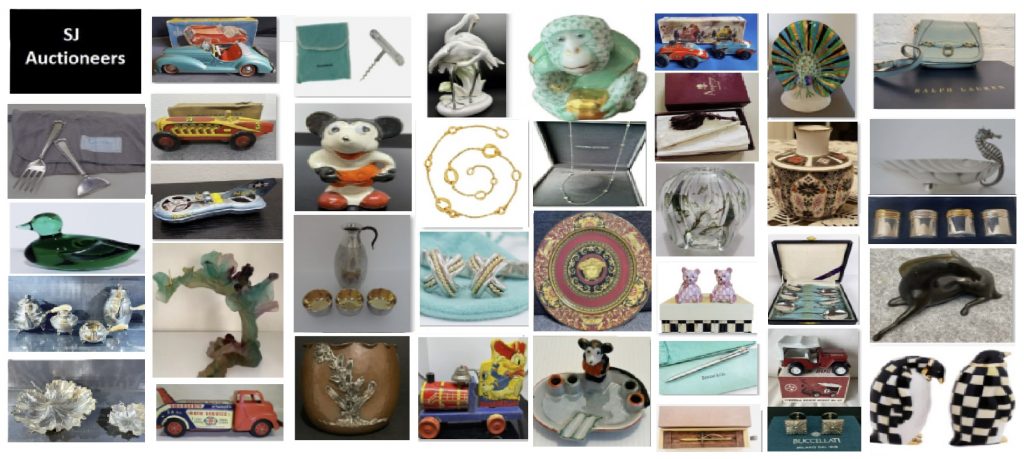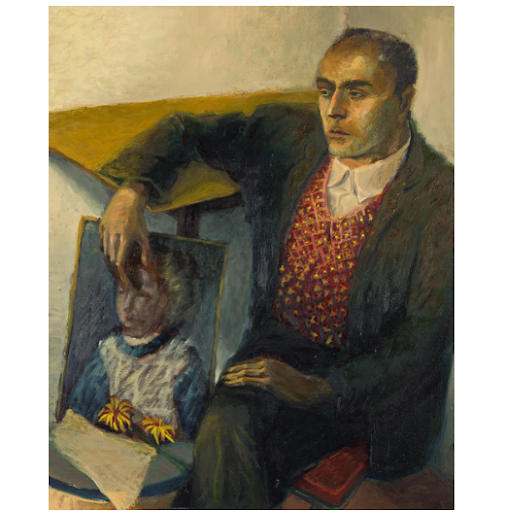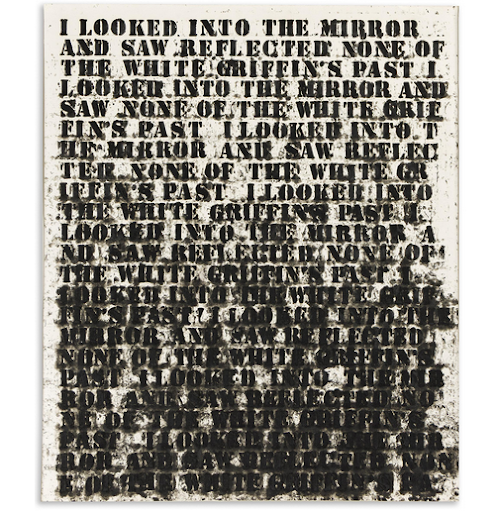Circa-1880s bottle for Pemberton’s French Wine Coca, a forerunner to Coca-Cola, served up a $31,980 top bid, while circa-1920s Pepsi-Cola fountain syrup jug went 4x estimate at $27,060

DENVER, Pa. – Elusive signage from the earliest days of the American soft drink industry delivered an effervescent $2.4-million result at Morphy’s August 18-20 Soda Pop, Advertising & General Store Auction. The 1,780-lot selection was dominated by rare Coca-Cola and Pepsi-Cola antiques, some commanding more than four times their high estimates.
Leading the formidable array of Coke collectibles – the largest grouping ever to be offered by Morphy’s – was a circa-1880s clear glass bottle with its original paper label identifying it as John Pemberton’s “French Wine Coca.” This concoction, touted as being an “Ideal Nerve Tonic / Health Restorer / Stimulant,” was the forerunner to the beverage its inventor would release in 1886: Coca-Cola. Embossed with the product’s name on its shoulder and with a label roughly 85% intact, the condition-8.0 bottle rocketed to an invigorating $31,980 against an estimate of $6,000-$12,000, making it the top lot of the sale.
An exceptional circa-1933 Coca-Cola double-sided porcelain sign with a Christmas bottle graphic and detailed filigree adornment across the top was marked Tennessee Enamel Mfg. Co. Nashville. It would have been hard to improve upon this bright and glossy sign, which rose to $30,750 against a $10,000-$20,000 estimate.
Another high-flier was a circa 1910s-1920s single-sided lithographed printer’s proof on paper depicting a man swimming up to a dock to accept a fountain glass of Coca-Cola from his lady friend. Presumably, the proof would have served as the basis for a die-cut cardboard window display. In 9.25 condition, it sold for $27,600 against an estimate of $10,000-$20,000.
A historically-important affinity lot consisted of a circa-1880s bottle embossed Pemberton’s Wine Coca; an 1868 Pemberton medicinal ad from the Rome (Ga.) Courier; a May 1886 newspaper ad from the Augusta (Ga.) Chronicle showing a portrait of John Pemberton with a favorable testimony; and an 1898 Atlanta Police Department publication with an early Coca-Cola ad on Page 26 and a French Wine Coca ad on Page 28. Estimated at $8,000-$16,000, the grouping achieved $24,600.
Coca-Cola Chewing Gum represented an innovative experiment in brand expansion. Coke-flavored gum was introduced in 1903 and discontinued in 1920. Any signage or ephemera pertaining to the product is equally desirable to collectors of chewing gum or Coke material. A prime example in Morphy’s sale was a circa 1914-1916 single-sided cardboard sign depicting a Dutch boy in wooden clogs, running with an oversize stick of Coca-Cola Peppermint Pepsin Gum cradled in his three-dimensional articulated arm. Representing the large-size version of this particular sign, measuring 24½ inches tall by 18¼ inches wide, it was graded 8.25 Excellent. The sign landed within its estimate range, at $20,910.
Also created to promote Coca-Cola gum, a circa-1903 single-sided die-cut cardboard sign featured a lavish graphic of opera singer Hilda Clark, who starred in many Coca-Cola beverage advertisements of her time. On this 16 by 20-inch sign, the elegant celebrity model is depicted with a stick of Coca-Cola Chewing Gum held daintily in one hand and a jeweled, feathered fan in the other. Graded 8.75+, the sign sold within estimate at $19,200.
With provenance from the respected Schmidt Museum of Coca-Cola Memorabilia, a circa-1908 tin-over-cardboard sign with a Coca-Cola script logo featured an appealing graphic of a straight-sided Coke bottle with a paper label. Graded in 8.0 condition, this fine example of a seldom-encountered sign prompted a winning bid of $14,760 against an estimate of $4,000-$8,000.
Pepsi-Cola highlights were both plentiful and impressive. A circa-1920s one-gallon fountain syrup jug bottled in New Bern, N.C., retained its artful paper label showing a young boy drinking Pepsi from an early fountain glass. The vessel was further decorated by a horizontal-strip image of well-dressed ladies and children at a soda fountain counter attended by two men in white pharmacy-style coats. Estimated at $3,000-$6,000, it was chased to a winning bid of $27,060.
Also harkening to the days when the local soda fountain was the place for socializing, a circa-1905 Pepsi-Cola “The Pepsin Drink” tip tray proved to be small but mighty. Six inches in diameter, with an early script logo and the maker’s name The Meek & Beach Co., Coshocton, O, it was AGS-graded 85 and sold for $27,060 against an estimate of $6,000-$12,000. Meanwhile, from behind the soda fountain counter, a gorgeous circa 1900-1910 ceramic Pepsi-Cola syrup dispenser presented in 8.25 condition. Ornately decorated in Art Nouveau style and complete with its original spigot and lid, it sold above its high estimate for $19,680.
Pepsi signage was led by a circa-1910 single-sided embossed tin sign featuring an early block-letter logo and the image of a bottle of Pepsi with a diamond-shape paper label. Emblazoned with the message Drink Delicious Pepsi-Cola / Very Refreshing, the 39½-inch by 13½-inch sign in 8.0 condition sold for a robust $19,200 against an estimate of $3,000-$6,000.
Also finishing well in the money, a circa-1905 Pepsi-Cola cardboard sign with the image of “Miss Pepsi-Cola” holding an early soda fountain glass enticed consumers with the message Drink Pepsi-Cola / Delicious / Healthful. It also noted a price of 5¢ and availability At Founts or In Bottles. In strong 8.5 condition, it reached the upper end of its estimate range at $16,800.
A Hires Root Beer “Munimaker” salesman’s sample dispenser was admired by auction previewers for its exceptional attention to detail. Made from marble, glass and nickel, it had a zinc liner and coils inside, just like its full-size counterpart. Its globe, bearing the message Drink Hires / It is Pure, was clean and undamaged. An incredible piece of soda pop history graded 8.75+, it lived up to its “Munimaker” name, finishing within estimate at a lofty $30,750.
Many other advertising categories were featured. One of the tobacciana highlights was a circa 1920s-1930s single-sided tin sign from Prince Albert Tobacco with a striking graphic of Chief Joseph of the Nez Perce tribe wearing a full feather bonnet and numerous bead necklaces. Also illustrated with a Prince Albert pocket tin and the slogan PRINCE ALBERT / the national joy smoke, the beautifully-executed sign realized $12,915 against an estimate of $3,000-$6,000.
A top breweriana lot was a 1930s-’40s Spearman Straight 8 Beer cone-top can from Spearman Brewing Co., Pensacola, Florida. Its graphic depicted Spanish explorer Ponce de Leon and the Fountain of Youth, noting: Brewed with the pure water Ponce de Leon spent his life seeking plus the finest grains and brewing talent. Marked IRTP (Internal Revenue Tax Paid) on its back seam, the condition-8.0 can exceeded its $1,000-$2,000 estimate, retiring at $5,166.
To discuss consigning to a future Soda Pop, Advertising & General Store Auction at Morphy’s, please call Dan Morphy tollfree at 877-968-8880 or email [email protected]. There is never an obligation to consign, and all enquiries are kept strictly confidential. Visit Morphy’s online at www.morphyauctions.com.






